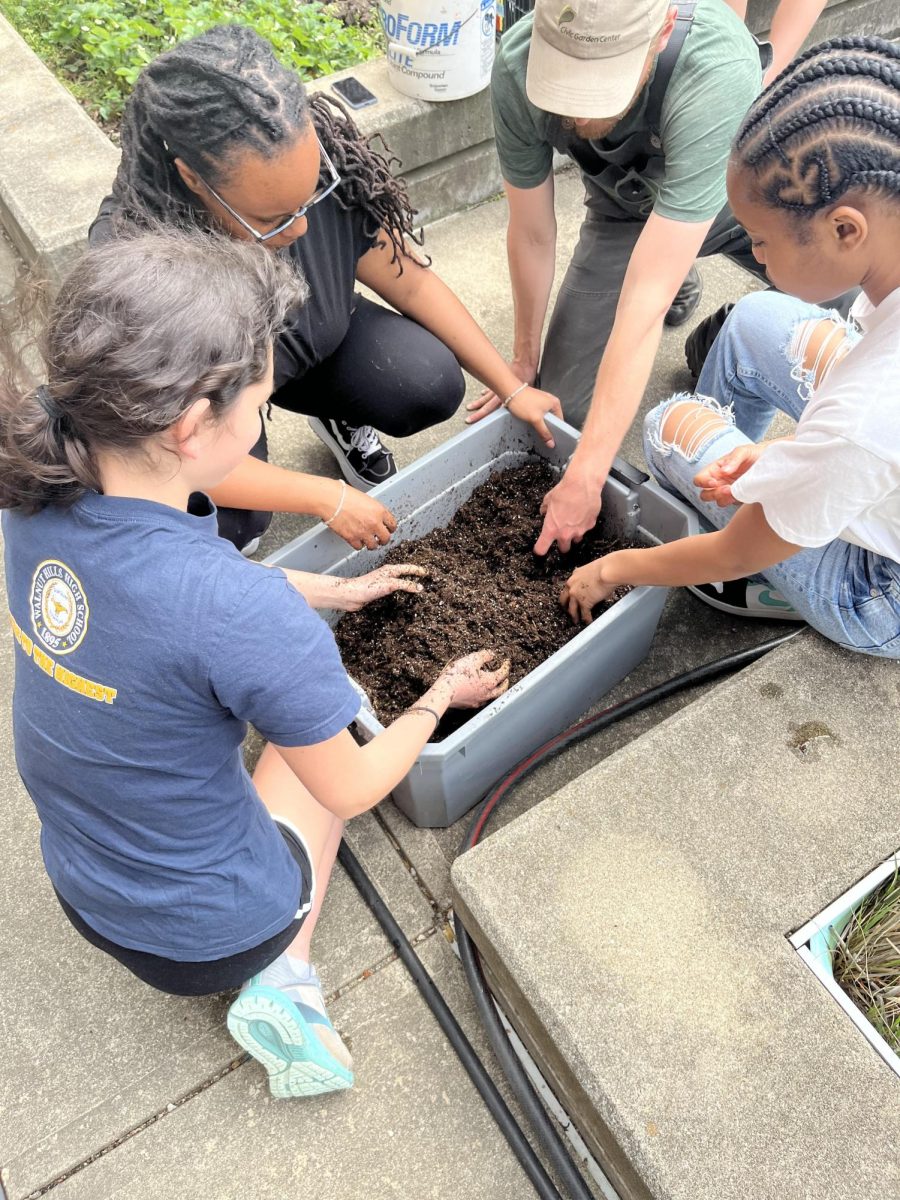This spring, the Walnut Woods received a new addition to its ecosystem. Chestnut trees, a species of tree that has declined in population over the past century due to a fungal disease, were planted in the woods on April 22.
The project is part of a seven to eight year restoration initiative for the Walnut Woods, facilitated by Cincinnati Parks. The area was devastated from an influx of Emerald Ash Borer, a species of beetle that killed 20% of the trees that made up the Walnut Woods. Cincinnati Park employee Sam Settlemyre is a part of the program and has worked with the WHHS student body to revitalize the area.
“[Walnut Woods] is a public park, owned by the city of Cincinnati and we have worked with volunteers to remove invasive plants and restore the park,” Settlemyre said. “A big part of that process has been engaging the students of Walnut Hills High School, so they can learn about it, as well as help in growing trees that are used for restoring the park so that we can reestablish canopy in the forest.”
However, many students are unaware of the change occurring in Walnut Woods.
“I don’t think a lot of students know about the progress and the change that goes on out in the woods,” Emmet Cunningham, ‘26, said. “I think the Walnut Woods is a resource that Walnut should use to give students an opportunity to learn about and connect with nature.”
The next step in the revitalization involves the reintroduction of the American chestnut tree to the area. This effort is part of a nationwide initiative to restore American chestnut trees to its native range as a result of its near extinction in the western hemisphere in the 1900s. Cincinnati Park Volunteer, Andrew Asimuth, helps in planting trees on the WHHS campus.
“In the eastern and north-eastern parts of the United States, there has been a lot of attention to propagating and trying to restore [chestnut trees] because they were such a key component to life in the Appalachian Mountains,” Asimus said, “It was such a significant tree in those regions, you can still find barns houses and furniture made out of chestnut trees. But once [the decline in chestnut population] started happening, it changed the whole economies of those mountain towns.
Bio-Eco Club plans to plant hybridized chestnut seeds which are components of different types of chestnut trees.
“They were able to cross-breed American chestnut seeds with Chinese chestnut seeds,so the seeds we planted out there are 96% American chestnut [and] 4% Chinese,” Asimus said. “It would be wonderful to be able to establish a colony of those trees.”
Introducing a new species to an ecosystem carries the risk of disrupting the natural balance and inviting organisms that may harm the area’s ecology. Hamilton County, situated on the edge of the westernmost boundary of the American chestnut’s historic range, faces this challenge as efforts to restore the species continue.
“Whether the soils here and the microclimates around this particular woods will be conductive to propagating and raising [these chestnut trees], we don’t know,” Asimus said.
This mission to reintroduce trees that have been displaced in part by human behavior to their natural habitat marks a new era in ecology.
“There has been a lot of variability in success. I wouldn’t say they are a fast growing species,” Settlemyer said. “It’s really about getting them out there to start to see what’s going to survive and get some experience with cultivating these trees.”



